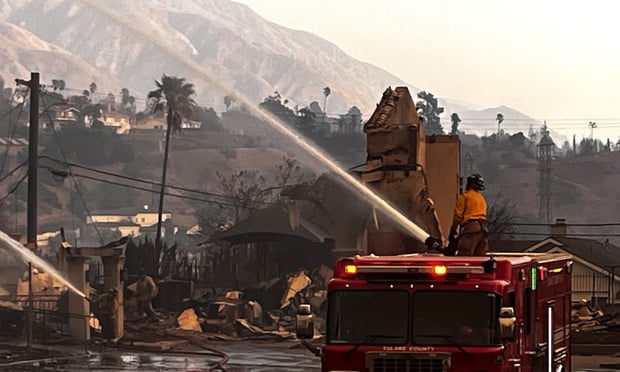 Everyone loves a good story, and much of the modern literature on American fire marks—lead or copper signs that during the 18th through early 20th centuries were affixed to the exterior of buildings and embossed with the logo of the owner's insurance carrier, with the purpose of letting fire brigades know who the insurer was—contains one or more of the following inaccuracies to enliven the story:
Everyone loves a good story, and much of the modern literature on American fire marks—lead or copper signs that during the 18th through early 20th centuries were affixed to the exterior of buildings and embossed with the logo of the owner's insurance carrier, with the purpose of letting fire brigades know who the insurer was—contains one or more of the following inaccuracies to enliven the story:
• The local volunteer fire company would not fight a fire unless there was a fire mark on the burning building.
• The volunteer fire company received a reward from the insurance company whose fire mark was on the burning building.
• The use of fire marks diminished because of the institution of paid municipal fire departments.
In reality, these points are more fiction than fact—more hype than history. So what are the facts?
NO FIRE MARK, NO FIREFIGHTING COMPANY?
The misconception that volunteer fire companies put out fires only on buildings that displayed a fire mark arises from the fact that some histories of fire marks do not make the distinction between British and American ones.
In England, fire-insurance companies employed their own fire brigades, which only fought fires on properties identified by their employers' fire mark or badge. In America, volunteer fire companies existed before the first fire-insurance company was organized; they fought fires whether or not a building displayed a fire mark.
There are no primary sources that indicate volunteer fire companies would not fight a fire unless the property was insured and had a fire mark. The reality is that volunteer fire companies were prominent social organizations and membership was an honor. Having made their case for funding by proclaiming their work in the public interest, it seems unlikely they would disregard any fire. Had this occurred, the hue and cry of the insurance industry and the public would certainly have been noted.
So what was the purpose of fire marks in America? Fire marks may have deterred would-be arsonists, since the property owner would not suffer the loss himself. Also, a fire mark may have been the only evidence of insurance, after the insurance policy itself burned in the fire.
In any case, these fire-insurance artifacts remain true works of art from a bygone era—and can sell for hundreds of dollars each at auction.
Want to continue reading?
Become a Free PropertyCasualty360 Digital Reader
Your access to unlimited PropertyCasualty360 content isn’t changing.
Once you are an ALM digital member, you’ll receive:
- Breaking insurance news and analysis, on-site and via our newsletters and custom alerts
- Weekly Insurance Speak podcast featuring exclusive interviews with industry leaders
- Educational webcasts, white papers, and ebooks from industry thought leaders
- Critical converage of the employee benefits and financial advisory markets on our other ALM sites, BenefitsPRO and ThinkAdvisor
Already have an account? Sign In Now
© 2025 ALM Global, LLC, All Rights Reserved. Request academic re-use from www.copyright.com. All other uses, submit a request to [email protected]. For more information visit Asset & Logo Licensing.








